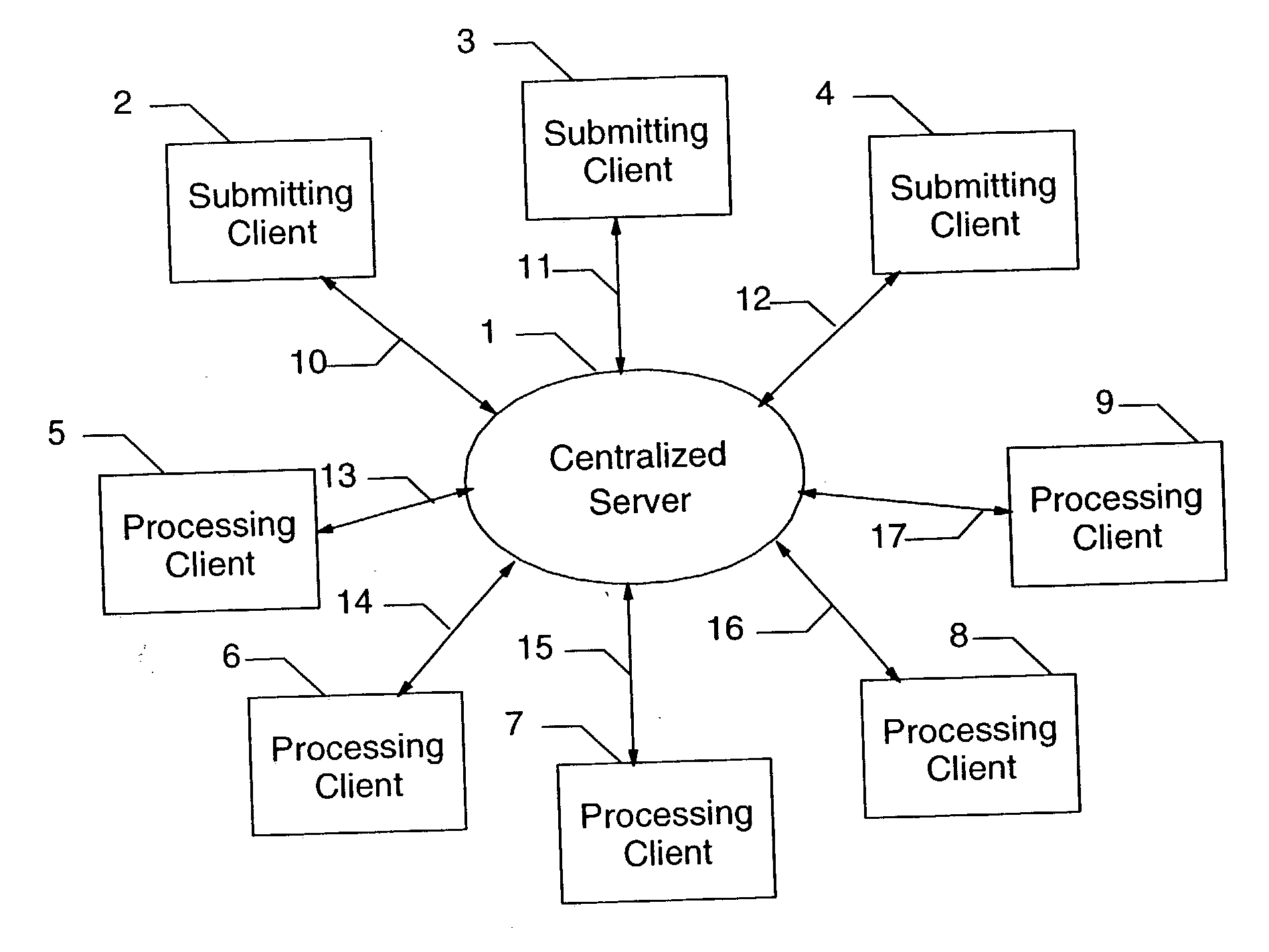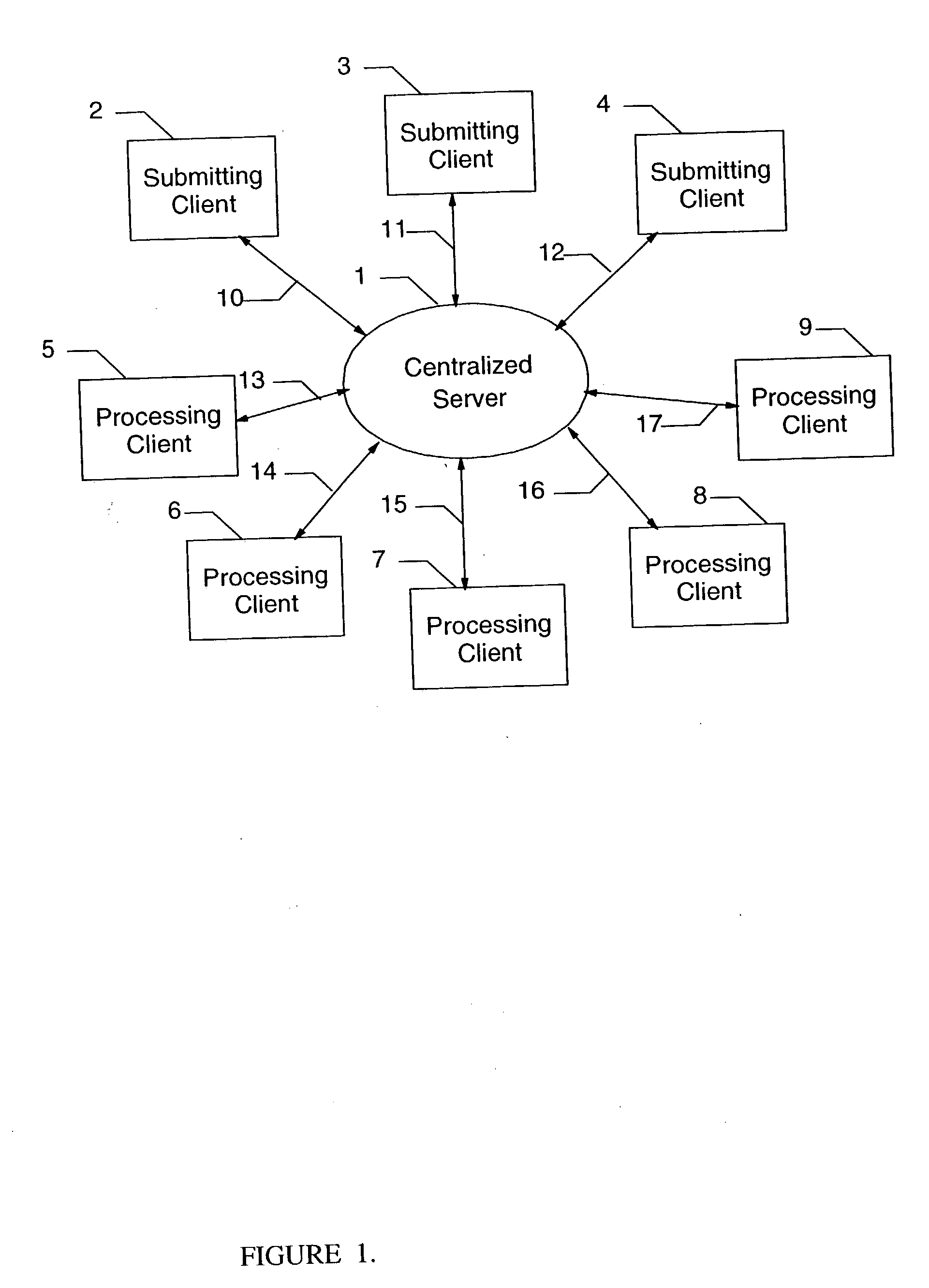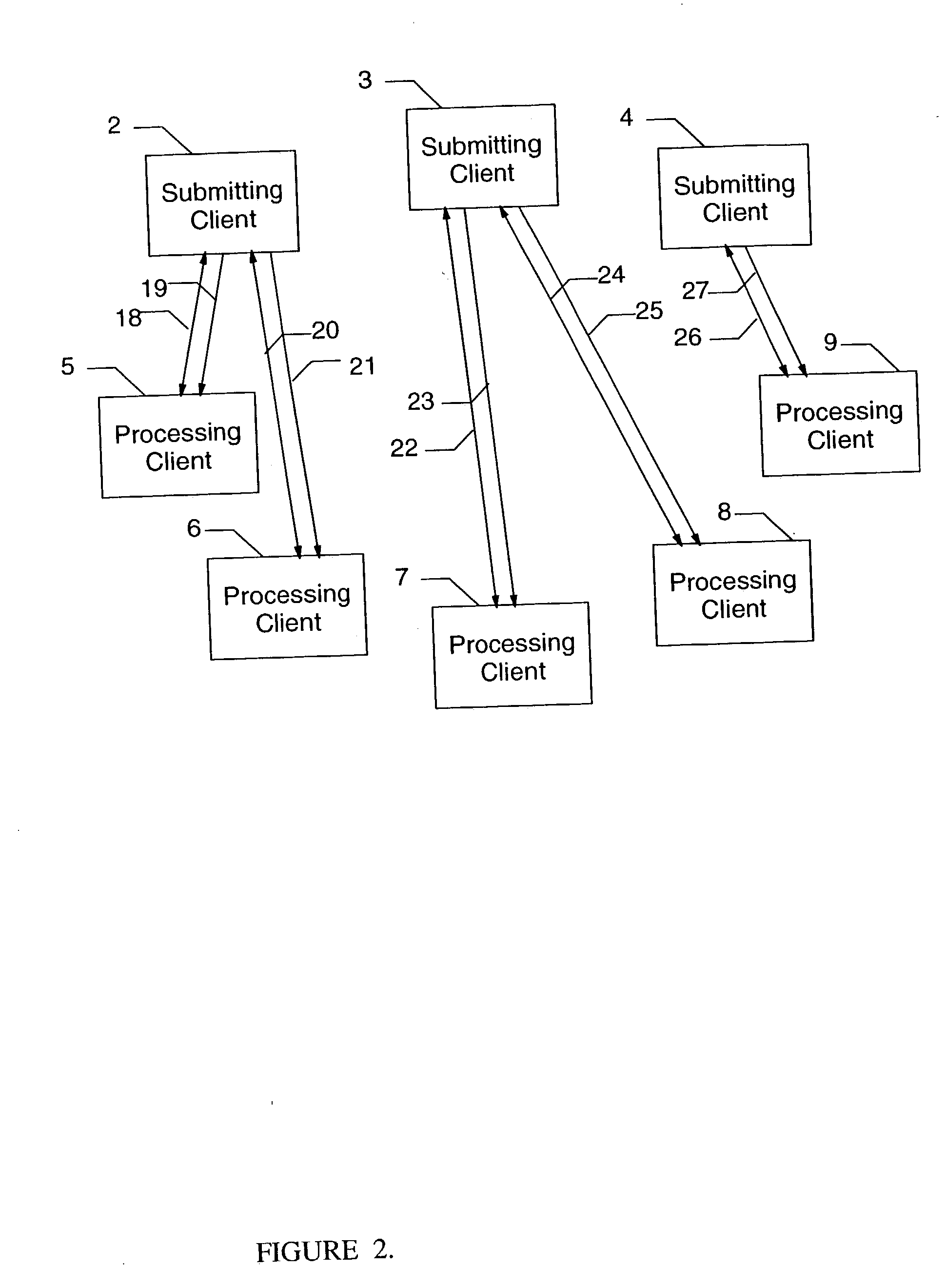Peer to peer job monitoring and control in grid computing systems
a job monitoring and job control technology, applied in the field of parallel processing, batch processing, grid computing, can solve the problem that the central server does not have the capacity or capacity to deal with the particular actions and requirements of each job step on each processing client in real time, and achieve the effect of improving communication and feedback
- Summary
- Abstract
- Description
- Claims
- Application Information
AI Technical Summary
Benefits of technology
Problems solved by technology
Method used
Image
Examples
Embodiment Construction
[0018]FIG. 1 illustrates a typical system for distributing a workload from a plurality of submitters to a multitude of clients for processing. Typically there is a centralized server 1 to which all requests are made, and from which all clients receive requests for processing. Clients are often capable of being submitters or processors, and may switch from one role to the other, or even act as both submitters and processors at the same time. For the example shown, clients 2, 3, and 4 will function as submitters, and clients 5, 6, 7, 8, and 9 will provide processing services. The communications structure shown, consisting of links 10, 11, 12, 13, 14, 15, 16, and 17 are used by the clients for communication with the centralized server 1. These communication links are utilized by the submitters 2, 3, and 4 to make requests for processing services, and for the centralized server 1 to dispatch processing requests to clients 5, 6, 7, 8, and 9, and for the centralized server to monitor the ...
PUM
| Property | Measurement | Unit |
|---|---|---|
| color | aaaaa | aaaaa |
| flexibility | aaaaa | aaaaa |
| time | aaaaa | aaaaa |
Abstract
Description
Claims
Application Information
 Login to View More
Login to View More - R&D
- Intellectual Property
- Life Sciences
- Materials
- Tech Scout
- Unparalleled Data Quality
- Higher Quality Content
- 60% Fewer Hallucinations
Browse by: Latest US Patents, China's latest patents, Technical Efficacy Thesaurus, Application Domain, Technology Topic, Popular Technical Reports.
© 2025 PatSnap. All rights reserved.Legal|Privacy policy|Modern Slavery Act Transparency Statement|Sitemap|About US| Contact US: help@patsnap.com



